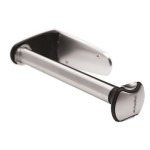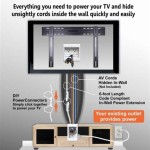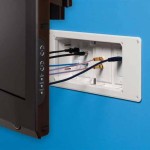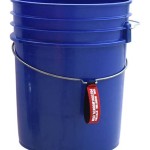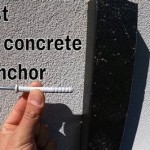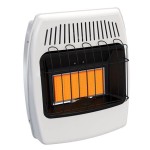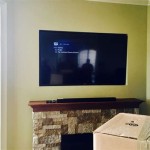Hide Your Cables: Achieving a Clean Look with a Wall Mounted TV
Wall mounting a television offers a sleek and modern aesthetic, freeing up floor space and providing an optimal viewing angle. However, the visual impact of a wall-mounted TV can be significantly diminished by unsightly dangling cables. Properly concealing these cables is crucial to achieving the desired clean and minimalist appearance. This guide explores various methods for hiding cables behind a wall-mounted TV, detailing the steps involved and the necessary materials.
Understanding the Challenges of Cable Concealment
Before embarking on a cable concealment project, it's important to understand the challenges involved. Walls often contain electrical wiring, plumbing, and structural supports. Damaging these components can be costly and dangerous. Furthermore, different wall types (drywall, plaster, brick, concrete) require different approaches and tools. A thorough assessment of the wall's construction and the location of existing utilities is paramount.
Successfully hiding cables also requires careful planning. Consider the number and types of cables that need to be concealed, including power cords, HDMI cables, coaxial cables, and Ethernet cables. The chosen concealment method must accommodate these cables without causing stress or damage to the wires. Finally, accessibility for future maintenance or upgrades should be factored into the design.
Methods for Hiding TV Cables Behind the Wall
Several techniques can be employed to conceal cables behind a wall-mounted TV. The best method depends on factors such as budget, DIY skills, and the desired level of concealment.
1. Cable Management Kits: These kits typically include plastic channels or raceways that adhere to the wall. The cables are routed through the channels, providing a neat and organized appearance. Cable management kits are relatively inexpensive and easy to install, making them a popular option for renters or individuals who prefer a non-invasive solution.
To install a cable management kit, first measure the distance between the TV and the floor or the location of the components connected to the TV. Cut the channels to the appropriate length, ensuring they are long enough to accommodate all the cables. Adhere the channels to the wall, carefully aligning them to create a straight and aesthetically pleasing path. Finally, insert the cables into the channels and snap the cover in place.
Cable management kits offer a visible solution, as the channels are still present on the wall. However, many kits are paintable, allowing them to blend seamlessly with the wall color. They also provide easy access to the cables for future modifications or repairs.
2. In-Wall Cable Management Systems: These systems involve running cables inside the wall cavity using specialized grommets and cable pass-through devices. This method provides a more discreet solution than cable management kits, as the cables are completely hidden from view.
Installation of an in-wall cable management system typically requires drilling holes in the wall to create pathways for the cables. These holes are typically located behind the TV and near the floor or the location of the connected components. Grommets or cable pass-through plates are then installed in the holes to protect the cables from abrasion and provide a finished look.
Before drilling, it is crucial to use a stud finder to locate wall studs and avoid drilling into them. It is also essential to check for electrical wiring and plumbing within the wall cavity. If unsure, consulting a qualified electrician or contractor is recommended.
Pulling the cables through the wall can be challenging, especially with multiple cables. Using a fish tape or a wire pulling lubricant can facilitate this process. Once the cables are in place, connect them to the TV and the other components.
In-wall cable management systems offer a clean and professional look, but they require more effort and skill to install than cable management kits. They also make it more difficult to access the cables for future changes.
3. Power Relocation Kits: Standard in-wall cable management kits do not allow for the in-wall running of electrical power cords. For safety and code compliance, a power relocation kit must be used if the goal is to move the power outlet behind the wall. These kits include a new, recessed electrical outlet and all necessary wiring to legally and safely extend the existing electrical circuit. Installation involves tapping into an existing electrical outlet and running the new wiring through the wall to the new outlet location.
This is not a project for someone unfamiliar with electrical work. Incorrect wiring can result in fire hazards or electrocution. A licensed electrician should always be consulted for this type of installation.
Power relocation kits provide a completely concealed power source for the TV, eliminating the need for a visible power cord. However, they are the most complex and expensive cable concealment option.
4. Conduit: Using conduit provides a protective pathway for cables that are either run on the surface of the wall or inside the wall. Metal or plastic conduit can be used depending on the application and local building codes. Conduit adds an extra layer of protection to prevent damage to the cables. It is useful in both residential and commercial settings.
5. Furniture: While not directly hiding cables within the wall, strategically placed furniture can effectively conceal cables. A media console placed directly beneath the wall-mounted TV can house the components and manage the cables running between them.
Key Considerations Before Starting Your Project
Planning is essential for a successful cable concealment project. Before drilling any holes or purchasing any materials, consider the following factors:
Wall Type: Different wall types require different tools and techniques. Drywall is the easiest to work with, while plaster, brick, and concrete require specialized drills and anchors. Identify the wall type before starting the project.
Cable Requirements: Determine the number and types of cables that need to be concealed. Ensure that the chosen concealment method can accommodate all the cables without causing stress or damage to the wires.
Local Building Codes: Check local building codes for any restrictions on running cables inside walls. Electrical codes may require the use of specific types of wiring and conduit.
Future Accessibility: Consider the need for future access to the cables for maintenance or upgrades. Choose a concealment method that allows for easy access without requiring major demolition.
Safety Precautions: Always disconnect the power to the TV and other components before working with electrical wiring. Wear safety glasses and gloves to protect yourself from dust and debris. If unsure about any aspect of the project, consult a qualified electrician or contractor.
Required Tools and Materials
The tools and materials needed for a cable concealment project vary depending on the chosen method. However, some common items include:
- Stud finder
- Drill with various drill bits
- Fish tape or wire pulling lubricant
- Screwdriver
- Wire strippers
- Cable management kit or in-wall cable management system
- Grommets or cable pass-through plates
- Level
- Tape measure
- Safety glasses and gloves
- Pencil or marker
In addition to these tools and materials, you may also need patching compound and paint to repair any holes or imperfections in the wall.
Step-by-Step Installation Guide (In-Wall Cable Management System)
This guide provides a general overview of the steps involved in installing an in-wall cable management system. Specific instructions may vary depending on the particular system being used.
Step 1: Planning and Preparation: Identify the location of the TV and the components that need to be connected. Measure the distance between the TV and the components. Determine the best route for the cables, avoiding wall studs and existing utilities.
Step 2: Marking the Wall: Use a stud finder to locate wall studs and mark their positions. Mark the locations for the upper and lower outlet holes, ensuring they are aligned vertically and spaced appropriately.
Step 3: Drilling the Holes: Use a hole saw attachment on a drill to create holes for the cable pass-through plates. Be careful not to drill into wall studs or pipes.
Step 4: Installing the Cable Pass-Through Plates: Insert the cable pass-through plates into the holes and secure them to the wall.
Step 5: Running the Cables: Attach the cables to a fish tape or wire pulling lubricant and carefully pull them through the wall from the upper hole to the lower hole.
Step 6: Connecting the Cables: Connect the cables to the TV and the other components.
Step 7: Securing the Cables: Use cable ties or Velcro straps to bundle the cables and keep them organized.
Step 8: Patching and Painting: Use patching compound to fill any holes or imperfections in the wall. Allow the patching compound to dry completely, then sand it smooth and paint it to match the wall color.
Troubleshooting Common Issues
Even with careful planning, some issues may arise during the cable concealment process. Here are some common problems and their solutions:
Difficulty Pulling Cables Through the Wall: Use a fish tape or wire pulling lubricant to reduce friction. If the cables are getting stuck on something, try wiggling the fish tape or using a different route.
Drilling into a Wall Stud: If you accidentally drill into a wall stud, stop drilling immediately. Use a different location for the hole or consult a qualified contractor.
Damaging Electrical Wiring or Plumbing: If you accidentally damage electrical wiring or plumbing, turn off the power or water supply and call a qualified electrician or plumber immediately.
Cables Not Fitting Through the Cable Pass-Through Plates: Use larger cable pass-through plates or smaller cables.
Patching Compound Cracking: Apply multiple thin layers of patching compound instead of one thick layer. Allow each layer to dry completely before applying the next one.
Alternatives to Hiding Cables Completely
While completely concealing cables behind the wall offers the cleanest look, alternative solutions can also effectively minimize cable clutter. These options are particularly useful when in-wall installations are not feasible or desired.
Cable Sleeves: These sleeves encase multiple cables within a single tube, creating a more organized and visually appealing appearance. They are available in various colors and materials to match the décor.
Cable Boxes: Cable boxes are enclosures that conceal power strips, surge protectors, and excess cable length. They can be placed on the floor or mounted to the wall.
Cord Clips: Cord clips are small adhesive fasteners that attach to the wall and hold cables in place. They can be used to route cables along baseboards or around corners.
Creative Cable Management: Employing decorative elements such as vines, artificial plants, or fabric to conceal cables can add a touch of style while minimizing their visibility.
By carefully considering the available options and planning the installation process, it is possible to achieve a clean and organized look with a wall-mounted TV, regardless of the chosen concealment method.

How To Hide Cords On A Wall Mounted Tv With Photos In My Own Style

How To Hide Tv Wires For A Cord Free Wall Young House Love

How To Hide Tv Cords In Student Housing Business Wire

Hide Cables 8 Diy Steps For A Sleek Wall Mounted Tv Space Wires On Hiding Cords

Creative Ways To Hide Cords On A Wall Mounted Tv

How To Hide Tv Cords And Wires Ask The Electrical Guy

How To Hide Cables On Your Wall Mounted Tv Artiss

How To Hide Tv Wires

How To Mount Your Tv The Wall And Hide Cords House Of Hepworths

How To Hide Tv Wires For A Cord Free Wall Young House Love

